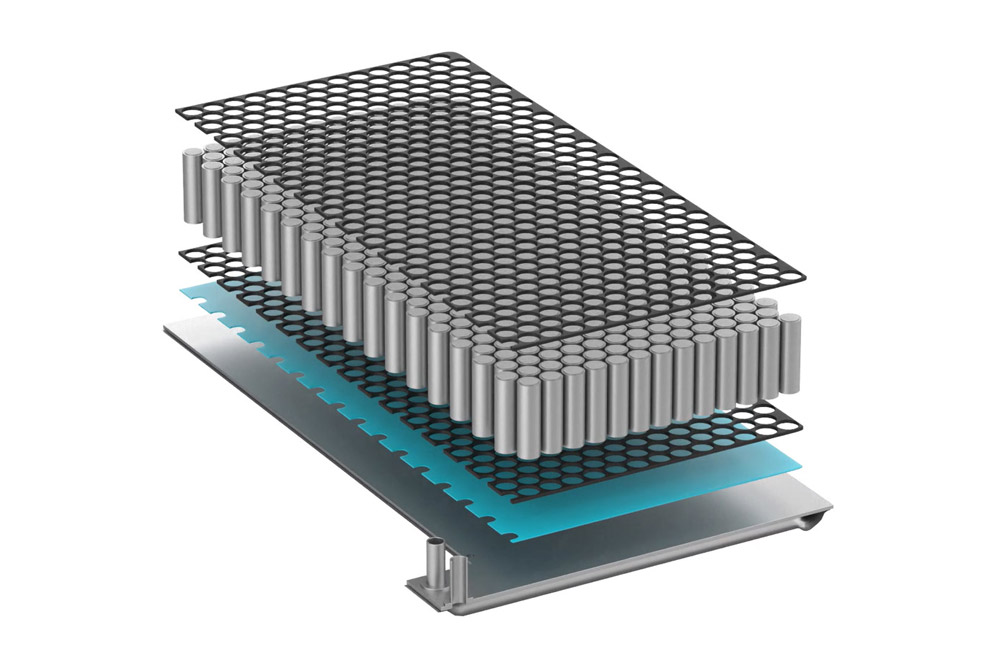The thermal conductivity of thermal interface materials is related to fillers

Thermal interface materials are not only widely used for heat dissipation of electronic equipment, but also have increasing demand in 5G communications, new energy vehicles, etc. In addition, they also have broad application prospects in the fields of military equipment and aerospace.
As a type of thermally conductive material, thermal conductivity is naturally the most important technical indicator of thermal interface materials. Commonly used thermal interface materials are mainly filled types, which are mainly prepared by filling a polymer matrix with high thermal conductivity fillers.
Usually, the inherent thermal conductivity of the polymer matrix is relatively low (about 0.2W/(m·K)). Therefore, the thermal conductivity of the thermal interface material is often determined by the filler.
Different types have different thermal conductivity
Commonly used thermally conductive fillers can be mainly divided into: metal thermally conductive fillers, carbon material thermally conductive fillers, and inorganic thermally conductive fillers.
Metals have good thermal conductivity and high thermal conductivity, so they are a commonly used thermal conductive filler. Commonly used metal thermally conductive fillers mainly include gold powder, silver powder, copper powder, aluminum powder, zinc powder, nickel powder and low melting point alloys.
Carbon materials generally have extremely high thermal conductivity, even better than metal fillers. The inherent thermal conductivity of the added carbon filler is one of the most important parameters that determines the thermal conductivity of carbon-based polymer composites. Commonly used carbon materials include graphite, carbon nanotubes, graphene, expanded graphite, carbon fiber and carbon black. Among them, carbon nanotubes have a thermal conductivity of 3100-3500W/(m·K) and graphene has a thermal conductivity of 2000-5200W/(m·K), making them promising candidates for thermal management applications.
Ceramic fillers not only have good thermal conductivity, but also have relatively low electrical conductivity. They are currently the most widely used fillers. Commonly used ceramic fillers mainly include oxides and nitrides. Oxides include Al2O3, ZnO, MgO, etc.; nitrides include: AlN, BN, etc.
Different shapes, different thermal conductivity
Thermal conductive fillers come in various shapes such as spherical, irregular, fibrous and flaky. Compared with zero-dimensional materials, one-dimensional materials (such as carbon nanotubes, carbon fibers, etc.) and two-dimensional materials (such as graphene, hexagonal boron nitride, flaky alumina, etc.) with ultra-high aspect ratios can be used in The larger contact area formed between fillers provides a wider path for the transmission of phonons, reduces the interface contact thermal resistance, and is conducive to the construction of a thermal conductive network in the system. However, since spherical fillers do not cause a sharp increase in viscosity at high filling levels, they are the most widely used in industry.
Different sizes, different thermal conductivity
The size of the thermally conductive filler also has a significant impact on the thermal conductivity of the thermally conductive composite.
When the filler is of a single size and the filling amount is the same, the thermal conductivity of composites filled with large particle size fillers tends to be higher than that of composites filled with small particle size fillers. This is because there is less interface contact between large particles. The interface thermal resistance is low. However, the particle size cannot be too large, otherwise, the fillers cannot form a close packing, which is not conducive to the formation of thermal conductive paths.
Different degrees of surface modification have different thermal conductivity
In order to solve the problem of interfacial thermal resistance, surface chemical functionalization of fillers is considered to be an effective method. Surface chemical functionalization of fillers can form covalent bridges that improve interfacial adhesion and minimize interfacial phonon scattering by interconnecting particle-resin and particle-particle interfaces. To improve the thermal conductivity of polymer composites, surface treatments have been applied to different fillers such as boron nitride nanotubes, graphene, etc.
Different purity and different thermal conductivity
Impurities in the filler will not only affect the electrical properties of the thermal interface material, but also have a certain impact on the process performance.
